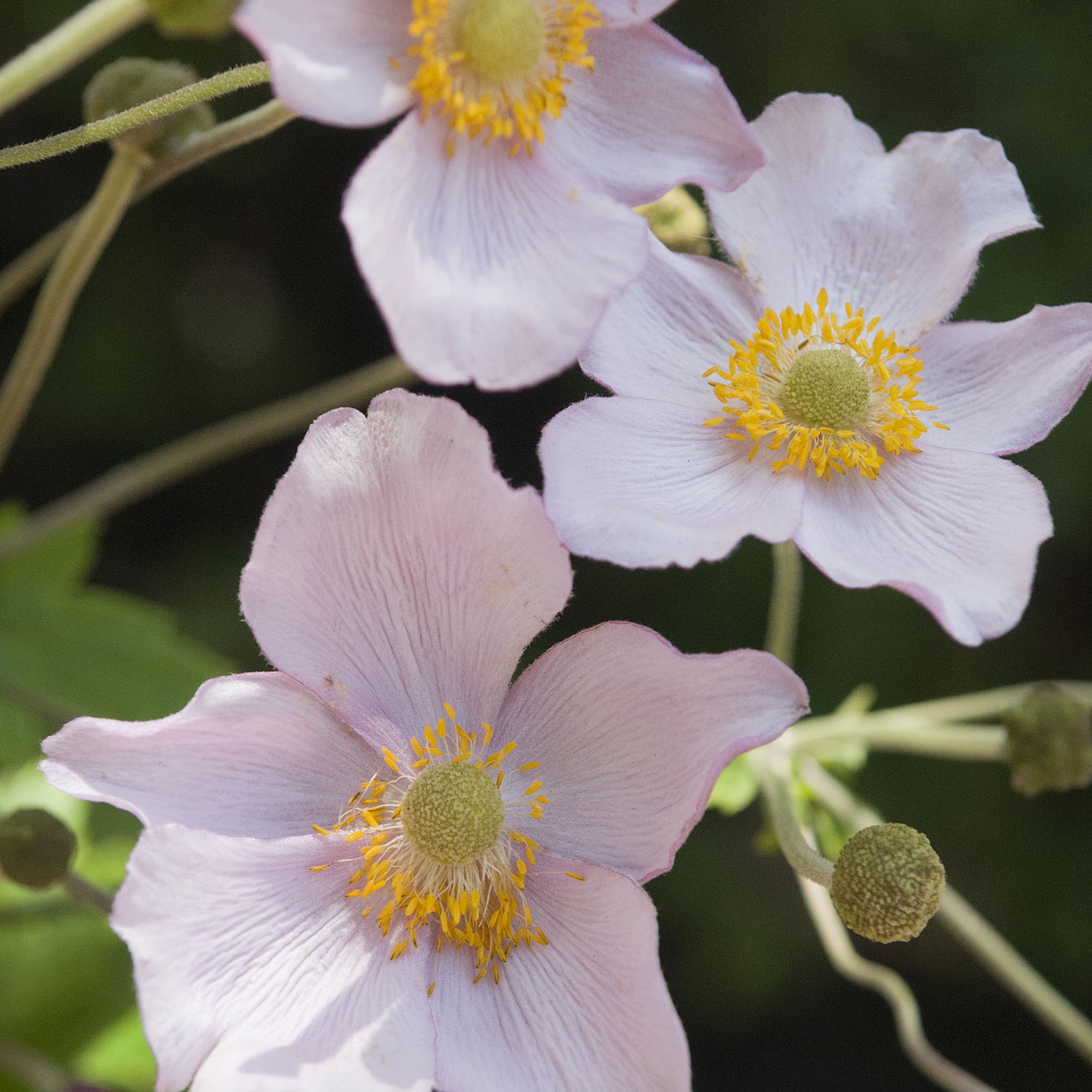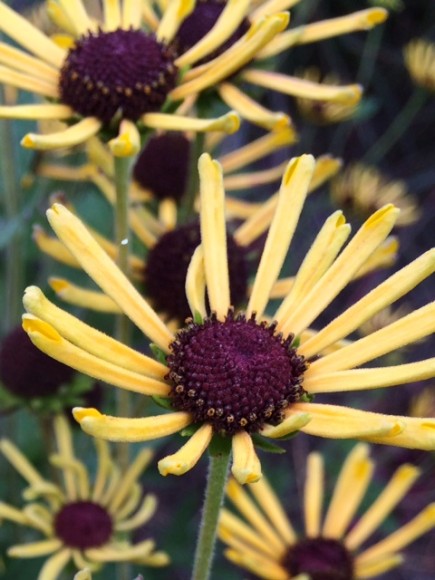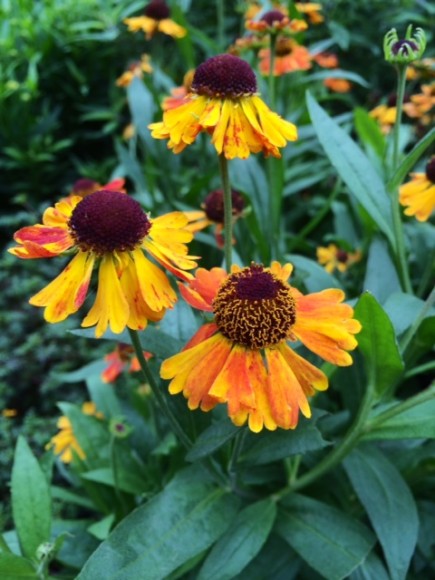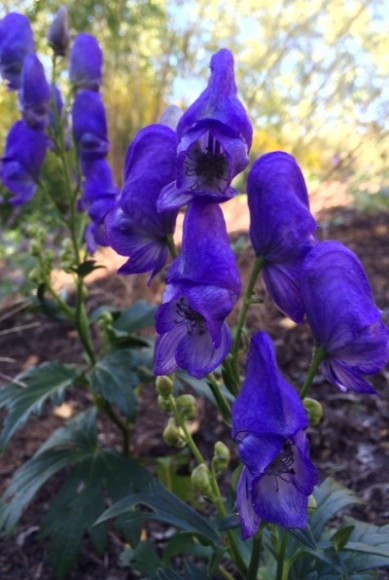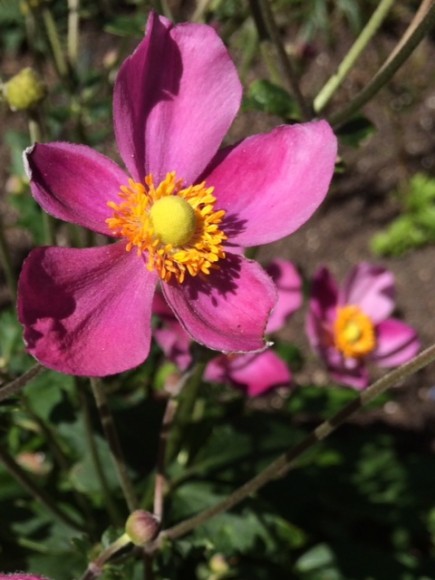Fall bloomers are already stealing the show and, while they are colorful, it is largely due to their size.
By the time many of these perennials bloom, they are so tall that they often need to be staked. Not to mention, some end up having unsightly “legs” from shedding lower leaves. Ironweed, monkshood, and sneezeweed are all guilty of this unsightly phenomenon. Fortunately, there is a compact substitute for each of these bulky favorites. So, if you want to give your yard more color in autumn but don’t want it confined to the back of the border, try planting these “shorties” up front.
Little Henry sweet coneflower
Rudbeckia subtomentosa ‘Little Henry’
Zones: 4 to 9
Size: 3 feet tall and 24 inches wide
Conditions: Full sun to partial shade; moist, well-drained soil
Little Henry sweet coneflower (Rudbeckia subtomentosa ‘Little Henry’) is the petite progeny of Rudbeckia subtomentosa ‘Henry Eilers’. While 3 feet isn’t necessarily short for a perennial, it is definitely an improvement over its 5- to 6-foot-tall daddy. And like Henry Eilers sweet coneflower, each petal is rolled to create a quilled appearance around an obvious chocolate cone. Flowering can begin well before September, but the unique shape and yellow hue really stand out in the fall landscape. (The leaves are said to smell of vanilla, but if you’re like me, ragweed season will make it difficult to notice.) Don’t be afraid to stick these beauties in a vase.
Short and Sassy sneezeweed
Helenium autumnale ‘Short and Sassy’
Zones: 3 to 8
Size: 18 inches tall and 2 feet wide
Conditions: Full sun; moist to wet soil
With Short and Sassy sneezeweed (Helenium autumnale ‘Short and Sassy’), the cultivar name says it all: the plant is 2 feet tall with an assertive orange-yellow color. In the past, all sneezeweeds grew 5 feet tall and would push out flowers from the beginning of August until October. ‘Short and Sassy’, however, has a much longer bloom time. Since it doesn’t have to grow as big, this cultivar begins flowering in midsummer and doesn’t quit until it has fought its way through multiple frosts. Heleniums are plants perfect for rain gardens or any moist, sunny spot. Butterflies find them irresistible, too.
Fischer’s monkshood
Aconitum fischeri
Zones: 4 to 8
Size: 2 feet tall and 18 inches wide
Conditions: Full sun to partial shade; moist, rich, well-drained soil
Under favorable conditions, an autumn-flowering monkshood can reach 4 to 5 feet tall—not exactly a plant you can showcase next to a path. Nevertheless, Fischer’s monkshood (Aconitum fischeri) is a lesser-known species that is beginning to find its way into the market. The 2-foot-tall plants sport the same size flowers as the commonly seen Aconitum carmichaelii and its hybrids. The showy blue flowers are perfect for adding fall color to a woodland garden, but are just as nice in a sunny border. Monkshoods are poisonous, so hide the children!
Iron Butterfly Ironweed
Vernonia lettermanii ‘Iron Butterfly’
Zones: 4 to 9
Size: 3 feet tall and 3 feet wide
Conditions: Full sun; well-drained soil
The reddish-purple color found in ironweed flowers is one of kind. The problem with these natives is that most of them get gigantic, usually around 8 feet tall. Fortunately, you can enjoy that stunning hue on a much more compact plant. Vernonia lettermanii is a 2- to 3-foot-tall species that naturally occurs in Oklahoma and Arkansas. Allan Armitage, Ph.D., selected the best form of this species from his trials and called it ‘Iron Butterfly’. The foliage and form are similar to Amsonia hubrichtii, but without the fall color. This shorty is tolerant of droughty soils or brief flooding, but it requires lots of sun. It’s also a butterfly magnet!
Pretty Lady Susan windflower
Anemone × hybrida ‘Pretty Lady Susan’
Zones: 4 to 8
Size: 16 inches tall and 2 feet wide
Conditions: Full sun to partial shade; moist, rich, well-drained soil
While I would rather see pink in the spring, I do love the poppylike feel of windflowers. They are also known as Japanese anemones and are sometimes listed under the name Anemone hupehensis. The Pretty Lady Series features crosses that stay 16 inches tall, as opposed to unwieldy 3- to 4-foot-high plants. They also have the same 2-inch flowers you would find on other Japanese anemone hybrids. Pictured here is a dark pink variety called Pretty Lady Susan windflower (Anemone x hybrida ‘Pretty Lady Susan’, but the series also includes a double-flowered, a bicolored, and a white-blooming form. Of course, I can’t wait to get my hands on Pretty Lady Maria windflower—the non-pink one.
©2014 Chicago Botanic Garden and my.chicagobotanic.org

